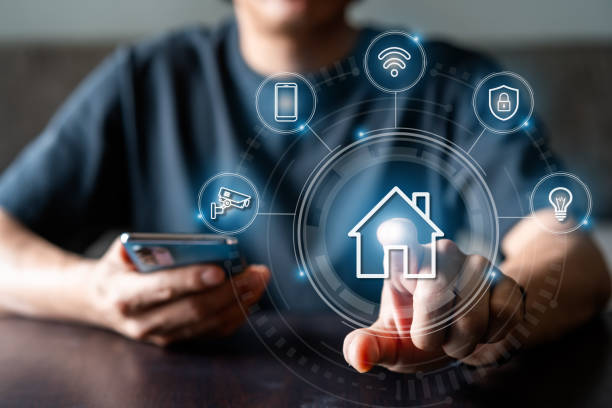
In a world where technology bridges the gap between the physical and digital realms, building a weather monitoring system using the power of the Internet of Things (IoT) is a fascinating endeavour.
Imagine having the ability to track and analyse weather conditions in real-time, all through a system you’ve crafted yourself.
In this guide, we’ll dive into the process of creating your very own weather monitoring system, bringing together the marvels of IoT technology and weather forecasting.
Weather Monitoring and IoT

Before we delve into the intricacies, let’s grasp the synergy between weather monitoring and IoT.
Imagine connecting various sensors to gather weather data—temperature, humidity, pressure, and more—and transmitting this information to a central hub for analysis.
That’s the essence of an IoT-powered weather monitoring system.
Think of IoT as the conductor of an orchestra—it orchestrates the flow of data.
By marrying weather monitoring with IoT, you’re creating a system that not only gathers data but also processes and interprets it, providing valuable insights into weather patterns.
The Foundation: IoT Components and Sensors
Imagine your weather monitoring system as a puzzle, and IoT components and sensors as the pieces that bring it to life.
According to Coding Ninjas, these components are the building blocks of your system—they collect raw data from the environment, transforming it into meaningful information.
Think of IoT components and sensors as scouts—they gather intelligence from the surroundings. By understanding these elements, you’re equipping yourself to select the right sensors and components for your weather monitoring system.
Data Gathering
Imagine placing sensors strategically in various locations to capture precise weather data—that’s the essence of data gathering.
Career Karma says sensors act as the eyes and ears of your system, observing temperature changes, humidity levels, and atmospheric pressure fluctuations.
Think of sensors as your assistants—they observe and report back to you.
By configuring these sensors accurately, you’re ensuring that your weather monitoring system captures reliable and accurate data for analysis.
Connectivity: Transmitting Data to the Cloud
Imagine if the data collected by your sensors could be seamlessly transmitted to a cloud-based platform—that’s where connectivity comes into play.
IoT enables your sensors to communicate with a central cloud hub, where data is stored and analysed.
Think of connectivity as a bridge—it connects the data from sensors to the cloud.
By establishing robust connectivity, you’re enabling your weather monitoring system to transmit data in real-time, making it accessible for analysis from anywhere.
Data Analysis
Imagine poring over data streams from your sensors, uncovering trends and patterns that reveal the ever-changing weather conditions—that’s the magic of data analysis.
Coursera cited that data analysis transforms raw data into actionable insights, helping you understand weather patterns and make informed decisions.
Think of data analysis as a detective—it pieces together clues to form a coherent picture.
By mastering this aspect, you’re enabling your weather monitoring system to provide valuable insights about temperature fluctuations, humidity levels, and atmospheric pressure changes.
Creating User-Friendly Interfaces
Imagine presenting complex weather data in a user-friendly interface, making it accessible and comprehensible to anyone—that’s the power of visualisation.
Visualisation transforms data into charts, graphs, and maps, enhancing the understanding of weather patterns.
Think of visualisation as a storyteller—it presents data in a way that’s easy to grasp.
By incorporating effective visualisation techniques, you’re making your weather monitoring system user-friendly, allowing users to interpret weather data effortlessly.
Putting it All Together
Imagine the satisfaction of seeing your weather monitoring system in action, providing real-time data and insights—that’s the culmination of your efforts.
Implementation involves setting up your system, configuring sensors, ensuring connectivity, and creating a user interface.
Think of implementation as the final brushstroke on a masterpiece—it completes the picture.
By bringing all the components together, you’re not just building a weather monitoring system; you’re creating a tool that offers insights into weather conditions, benefiting individuals and communities alike.
Okay my dear readers, let us look into some frequently asked questions (FAQs) about How to build a weather monitoring system using IoT.
How can I build a weather monitoring system using IoT?
To create a weather monitoring system with IoT, choose appropriate sensors for temperature, humidity, and pressure, connect them to a microcontroller like Arduino or Raspberry Pi, and use a cloud platform to collect and analyse data.
What benefits does an IoT weather monitoring system offer?
An IoT weather monitoring system provides real-time weather data, enhances data accuracy, enables remote monitoring, and supports data-driven decision-making in various applications.
Do I need advanced programming skills to build this system?
Basic programming skills are helpful, and resources and tutorials are available online. IoT development platforms offer user-friendly tools to simplify the process.
How can I ensure the data from my IoT weather system is secure?
Secure your IoT weather system by implementing encryption for data transmission, using secure cloud platforms, regularly updating software, and following best practices for IoT security.
Conclusion
In the tapestry of technological marvels, building a weather monitoring system using IoT stands out as a practical and empowering achievement.
By harnessing the capabilities of IoT components, sensors, data analysis, and visualisation, you’re not just building a system—you’re creating a platform that empowers you to observe, analyse, and understand weather patterns.
Imagine the impact of your weather monitoring system—providing real-time weather updates, aiding in decision-making, and fostering a deeper connection with the environment.
As you embark on this journey, remember that the power of technology lies in your hands, and your weather monitoring system is a testament to the creative fusion of IoT and meteorology.








